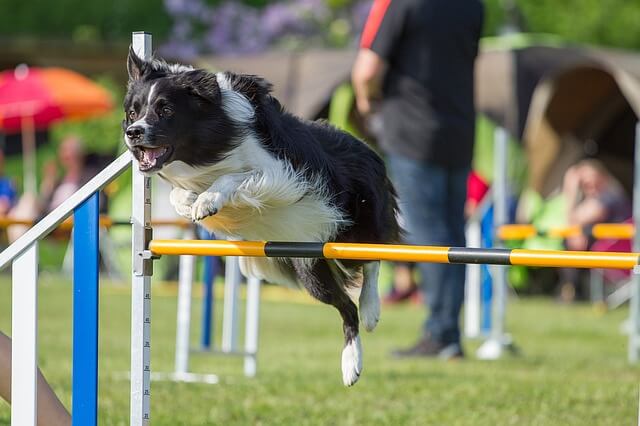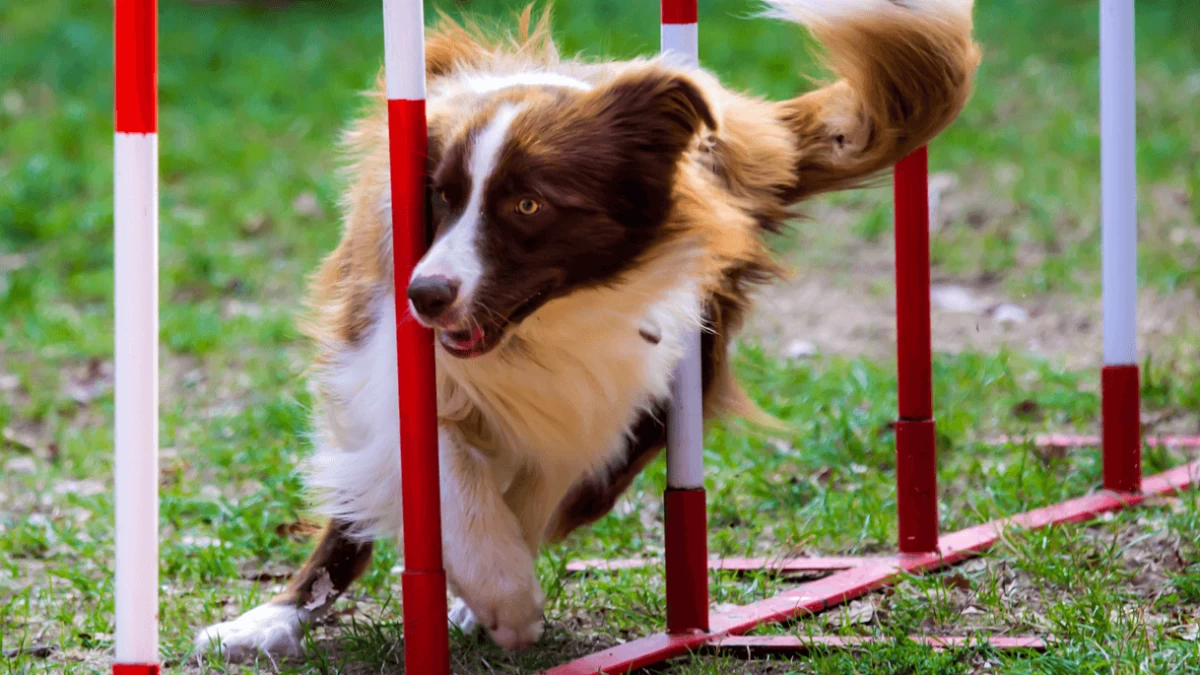All About Dog Agility Training
11.04.2021.
Dog agility is the fastest developing and growing dog sport in the US. It is a lot of fun for dogs and their owners. Plus, it provides your energetic dog with a healthy energy outlet. Not only is this dog sport fun, but it is also a great way of preventing any behavioral issues that your dog could develop.
If you had a chance of attending agility trials live or maybe see one online, you probably noticed how interesting it looks. Many dog owners would love to join the dog agility community but simply have no idea where to start. If you want to train your dog to become a competitor in dog agility trials, check out these helpful tips that will get you and your dog started.
1. Prepare the terrain
Learning agility is not necessary for your dog, so make sure they want to do it because they enjoy it. This is different than teaching your dog basic commands. You should set your dog up for success by implementing short dog agility training sessions, use plenty of treats and praises, and take your time.
Some dogs will advance faster than others, but that is no reason to be discouraged. Make sure your dog has fun, and they actually love learning basic agility commands. That way, you will prepare them well for further development.

2. Attention training
Dog agility is based on the dog’s handler giving them instructions. Without instructions, the dog has no idea where they have to go next. A great way to ensure further development is to train your dog to focus on you. You can teach them commands like “Watch Me” and slowly move into areas where your dog has to obey that command despite many distractions. That is the best way to increase your dog’s attention span.
3. Flexibility training
You probably noticed dogs weaving around agility poles if you watched agility trials. You don’t have to teach your dog to do that initially, but you should start training flexibility. Teach your dog to spin in circles. That will stretch the sides of their bodies and make sure they are prepared for fast weaving. The end goal you should have in basic agility training is to teach your dog to weave a figure 8 around your legs. The tight corners will flex your dog and prepare them for the agility course.

4. Tricks
Teaching your dog basic tricks won’t do much in the agility trials, but it will build your dog’s confidence and faith in you as their handler. After successful basic trick training, you can move to more complicated tricks they will actually benefit from on the course. Teaching your dog to move backward will get them to pay attention to all four of their paws. Teaching your dog to jump through a hoop is a great introduction to tire jumping they will need to perform on an agility course.
If you are not sure which dog tricks are the easiest to learn, check out this article - Best tricks to teach your dog.
5. Sharpen your handling skills
Dog agility won’t work if the handler is not in sync with their dog. The best way to ensure success in agility trials is by training your dog and sharpening your handling skills. Agility will demand you navigate your dog from up close, but it will also demand your dog can follow your commands from afar.

Start by teaching your dog to walk comfortably on both sides of you. The next step is to teach them to switch sides. Make sure you use plenty of treats while training. The next step would be to teach your dog how to move away from you in both directions. Another trick you can start training your dog at this point is to turn tightly around an object. That is an excellent way of making them comfortable taking sharp corners while running in the dog agility course.
6. Body awareness training
You might be surprised to find out dogs don’t have great body awareness. All dog breeds run the same - their body follows where their front paws lead. In dog agility trials, your dog will have to be aware of where they are placing every paw, so working on body awareness is necessary.
The best way to train body awareness as a part of dog agility training is to use objects your dog should interact with. You can use any kind of object, even a footstool. Your dog can jump on it or just put their front paws on it. That is an excellent introduction to the pause table in the dog agility course.
7. Tunnel introduction
Another interesting obstacle your dog will have to conquer in dog agility trials is the tunnel. Some dogs have no problem with it, but others get stumped by the dark opening. It is a great idea to introduce your dog to running through the tunnel. Make sure the first time you show them the tunnel, it is only a short one. Use a cardboard box or make-shift tunnel made from chairs and sheets. Take your time and never force your dog to go in it. Instead, use treats or lure them in by crawling through it first.

If you don’t want to improvise, there are dog agility equipment sets and obstacles you can order. Check out this article for more information - Dog agility equipment.
8. Moving objects
Another obstacle your dog will have to overcome is the seesaw. Dogs are not too comfortable with something moving beneath their feet. You should start introducing them to different moving objects to get them used to the feeling of something moving underneath their paws. A great way to start is to use a balance board. You can even make one yourself. All you will need is a large enough piece of plywood with a brick or a rock underneath it. Lure your dog to climb on it, and make sure you reward them if they stay on. Your dog will get used to having movable objects underneath them.
9. Jumping
Jumping is probably the most critical skill for dog agility. That is a skill your dog should learn as soon as possible. Luckily, there is a way you can introduce them to jumping over obstacles. The best way to do that is by setting the bar low - literally. Jumping in dog agility is not too high. Instead, your dog should jump over obstacles as fast as possible. When introducing this part to your puppy, you can simply place a broom on top of two books. Make sure your puppy can quickly get over it, and remember to reward them every time they are successful.

Active dogs tend to do best in dog agility trials. Check out this article about the most active dog breeds in the world.
In conclusion
Suppose you think dog agility is something you and your dog might be interested in. In that case, these tips and tricks are a great way to make an introduction to the dynamic and fast-moving world of dog agility. Even if your dog goes through this introduction with flying colors, they still have to learn many things before they can compete.
You will most likely have to ask for professional help. Still, every dog agility trainer will be delighted your dog is familiar with all agility obstacles. If you follow these tips, you will lay the best possible foundation for your dog. You never know; you might have the next champion on your hands.
World Dog Finder team







Share